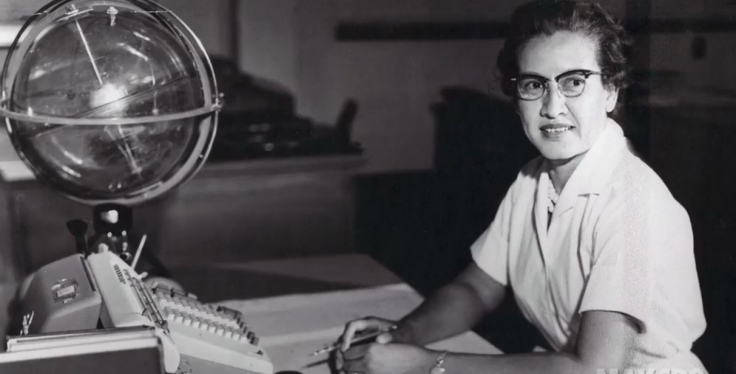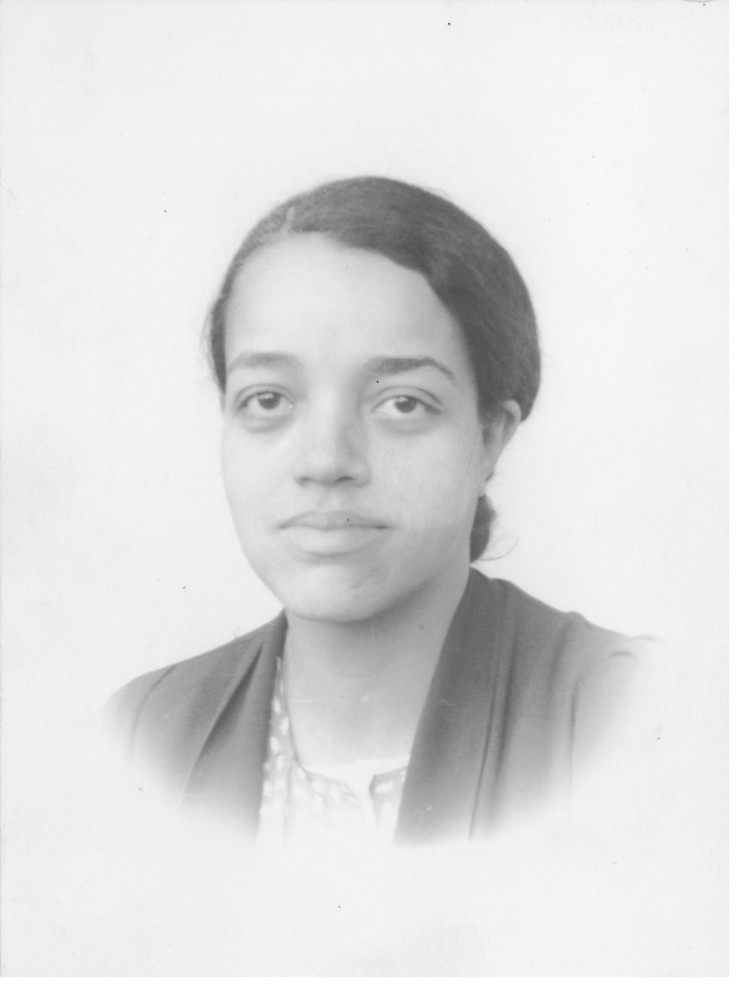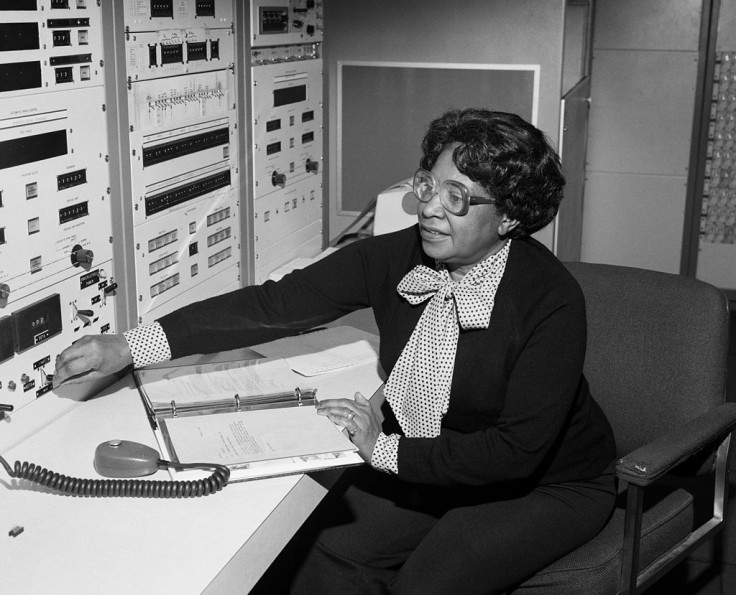Hidden Figures: The real story of Katherine G Johnson, Dorothy Vaughan and Mary Jackson
Hollywood blockbuster tells the story of three black women involved in the 1960s space race - but IBTimes fills in the gaps.

It shouldn't have taken this long but 55 years after the space race of the 1960s and Nasa's launch of astronaut John Glenn into orbit, the film Hidden Figures is finally telling the tale of three African-American women who helped make it possible for man to walk on the moon.
It also shows how they challenged gender and racial discrimination in the workplace.
Hidden Figures is an inspiring film, but it is merely a snapshot of the lives of Katherine G Johnson, Dorothy Vaughan and Mary Jackson.
What else did these women achieve in their lives? What happened to Johnson's first husband? How did they come to work at Nasa, when the traditional role of women in the 60s with families was to be the stay-at-home mums?
IBTimes UK fills in the blanks to tell you the real story.
The real Katherine Goble Johnson

Maths prodigy Johnson was born Katherine Coleman on 26 August 1918 in White Sulphur Springs, West Virginia. By the age of 10 she had already completed the eighth grade (age 13-14), and since her town didn't offer schooling for African-Americans after that grade because of racial segregation, her family moved 120 miles to a bigger town in Institute, West Virginia so that she could attend high school.
By 15, Johnson had enrolled at West Virginia State College (now West Virginia State University) in Institute and at 18 she graduated summa cum laude with the highest honours degrees in both mathematics and French, under the tutelage of Dr William W Schieffelin Claytor, a professor who was the third African-American in the country to earn a PhD in mathematics, and Angie Turner King, who was one of the first African-American women ever to gain a PhD in chemistry and mathematics.
Claytor was determined for Johnson to have the chance to become a research mathematician, even creating new mathematics courses just for her. A year later, in 1937, she became a maths and French teacher at a black public school. After a US Supreme Court ruling, she and two other students became the first ever chosen to desegregate WSU's white-only graduate school in the city of Morgantown.
She was the only female selected and she enrolled in the graduate school's maths programme but she faced a hostile environment and decided not to complete her studies. She went back to teaching and in 1939 quit to marry James Francis Goble, with whom she had three daughters Joylette, Katherine and Constance. Sadly Goble died of an inoperable brain tumour in 1956.
In 1952, at the age of 34, Johnson was told by a relative that the National Advisory Committee for Aeronautics (Naca, which became Nasa in 1958) was looking to hire both African-American and white mathematicians for its Guidance and Navigation Department at the Langley Research Center in Hampton, Virginia.
She became part of a pool of women who performed and checked mathematical calculations for technological developments for five years, from 1953 to 1958, until one day she and a colleague were temporarily assigned to an all-male flight research team. Her knowledge of analytic geometry made her an essential part of the team and her bosses "forgot" to return her to the pool.
From 1958 until she retired in 1986, Johnson became an aerospace technologist, calculating the trajectory for the space flight for the first American in space, Alan Shepard, in May 1961, as well as the launch window for his 1961 mission.
She also verified the electronic computer's numbers for John Glenn's orbit around the Earth in 1962, and in 1969 calculated the historic Apollo 11 trip to the moon, and finally, she worked on the calculations hat helped to bring the Apollo 13 safely back to Earth after it malfunctioned in space in 1970.
The real Dorothy Johnson Vaughan

Dorothy Johnson Vaughan was born in 1910 in Kansas City, Missouri. Her family moved to Morgantown, West Virginia and she completed high school and received a BA in mathematics from the historically black college Wilberforce University in Ohio in 1929 at the age of 19.
Although her professors encouraged her to go on to graduate study at Howard University, she instead became a teacher as she wanted to support her family during the Great Depression. She married Howard S Vaughan Jr in 1932 and they had six children.
Over the next 11 years she alternated between being a housewife and a maths teacher at Robert Russa Moton High School, a black public school that became the birthplace of America's civil rights movement. In 1943 the Vaughan family moved to Newport News, Virginia.
That same year, at the age of 33, Vaughan joined the Naca as part of the pioneering batch of African-Americans hired to become scientists and mathematicians, thanks to an executive order by President Roosevelt forbidding racial, ethnic or religious discrimination in the defence industry as he ramped up the war effort.
Vaughan was assigned to the West Area Computers Group at Langley Research Center – the same segregated pool of African-American women who performed mathematical calculations by hand that Johnson later joined. When the white woman who ran the group died in 1949, Vaughan was made acting head of West Area Computers – the first black supervisor at Naca and one of the very few female supervisors in the whole organisation. It took years for her to be officially made supervisor.
Vaughan was smart enough to realise that digital computers had the potential to replace the human "computers" in her team and she wanted to ensure that the women could still have a future in the organisation. She taught herself the Fortran programming language for the IBM 704 mainframe computers that Nasa was installing.
She became an expert programmer, taught many women to programme and worked on the Solid Controlled Orbital Utility Test launch vehicle, which was used to put a 385-pound satellite into a 500-mile orbit. Vaughan hoped to be promoted to management, but never moved up again before she retired in 1971. In the last decade of her career, she worked closely with Johnson and Jackson to help launch John Glenn into orbit.
The real Mary Jackson

Mary Jackson, born Mary Winston on 9 April 1921 in Hampton, Virginia, was fortunate to be living in an area with all-black schools. She completed high school with high honours in 1937 before going on to Hampton Institute, where in 1942 she earned bachelor's degrees in mathematics and physical science.
After graduation, she became a teacher and taught maths at a black high school in Calvert County, Maryland for a year, as well as tutoring high school and college students. In 1943 she returned to Hampton where she spent the next eight years working in a variety of jobs, including bookkeeping, receptionist and army secretary. She gave birth to a son, Levi.
In 1951, at the age of 30, she applied and was accepted into the Naca's West Area Computing division and worked under Dorothy Vaughan as a human "computer". Although Roosevelt's executive order prevented discrimination in the defence industry, Virginia state law still enforced segregation in the workplace, and Jackson grew unhappy about being treated as less than her white colleagues, as together with the other African American employees, she had to use separate restrooms and cafeterias.
She was on the verge of resigning in 1953 but had a conversation with a supervisor, the engineer Kazimierz Czarnecki. He invited her to work with him in the supersonic pressure tunnel and he encouraged her to train to become an engineer.
In order to do this, Jackson needed to take graduate night school courses in maths and physics from the University of Virginia, which were taught at the all-white Hampton High School. As that was the only way she could take the courses she needed, Jackson had to petition the City of Hampton to allow her to attend the courses.
She was successful and was promoted to aerospace engineer in 1958 at the age of 37. This also made her Nasa's first ever African-American female engineer. In her 34-year career at the space agency, she authored and co-authored papers, studying data to help improve US planes.
She achieved the most senior rank within the engineering department and decided to take a demotion to become a human resources administrator until her retirement in 1985. She wanted to help other women and minorities advance their careers by providing advice on the types of courses they needed to study to increase their chances for promotion.
She was also a girl scout for 30 years and served on the committees and boards of multiple charitable organisations to help African-American women and disadvantaged youth.
© Copyright IBTimes 2024. All rights reserved.























